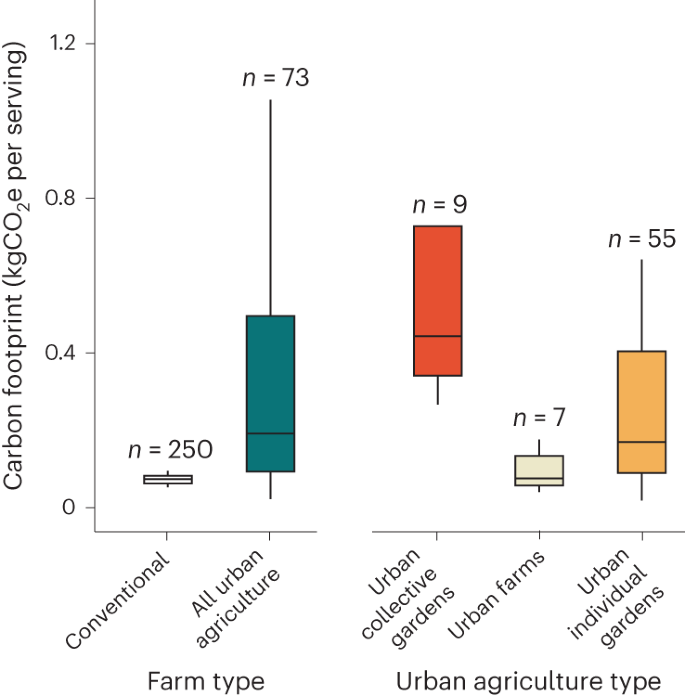2024-01-22 ミシガン大学
◆ただし、露天の都市プロットで育てられたトマトは通常の温室で育てられたものよりも炭素排出が低く、航空輸送されるアスパラガスなどの一部の都市育ちの作物は通常の農業と同等でした。これにより、都市農業が気候への影響を減少させるためには、栽培作物の選択とサイトの設計・管理の変更が必要とされます。
<関連情報>
- https://news.umich.edu/food-from-urban-agriculture-has-carbon-footprint-6-times-larger-than-conventional-produce-study-shows/
- https://www.nature.com/articles/s44284-023-00023-3
都市農業と従来型農業の二酸化炭素排出量の比較 Comparing the carbon footprints of urban and conventional agriculture
Jason K. Hawes,Benjamin P. Goldstein,Joshua P. Newell,Erica Dorr,Silvio Caputo,Runrid Fox-Kämper,Baptiste Grard,Rositsa T. Ilieva,Agnès Fargue-Lelièvre,Lidia Poniży,Victoria Schoen,Kathrin Specht & Nevin Cohen
Nature Cities Published:22 January 2024
DOI:https://doi.org/10.1038/s44284-023-00023-3

Abstract
Urban agriculture (UA) is a widely proposed strategy to make cities and urban food systems more sustainable. Until now, we have lacked a comprehensive assessment of the environmental performance of UA relative to conventional agriculture, and results from earlier studies have been mixed. This is the first large-scale study to resolve this uncertainty across cities and types of UA, employing citizen science at 73 UA sites in Europe and the United States to compare UA products to food from conventional farms. Results reveal that the carbon footprint of food from UA is six times greater than conventional agriculture (420 gCO2e versus 70 gCO2e per serving). However, some UA crops (for example, tomatoes) and sites (for example, 25% of individually managed gardens) outperform conventional agriculture. These exceptions suggest that UA practitioners can reduce their climate impacts by cultivating crops that are typically greenhouse-grown or air-freighted, maintaining UA sites for many years, and leveraging circularity (waste as inputs).


